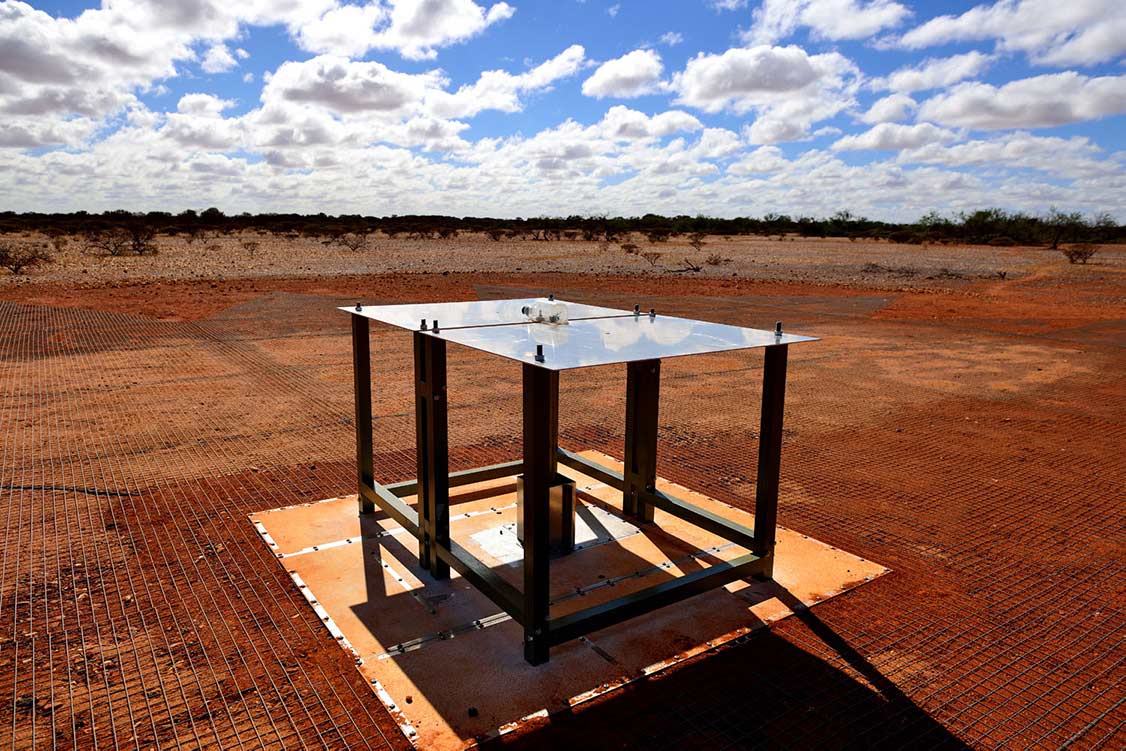The sound of the very first stars
For the first time, astronomers using an antenna no bigger than a small dining table in outback Western Australia have detected radio signal evidence of the very first stars to form in the universe, about 180 million years after the Big Bang.
This result gives us an early glimpse into a relatively unknown period of our universe’s history—the end of the Cosmic Dark Ages, just as the first stars were forming. It provides a way forward for investigators to look at these early stars as the universe started to take shape.
The signal was predicted many years ago, but astronomers only had a rough idea as to what frequency the signal would have. The signal they expected was thousands of times smaller than the background radio noise of the universe. Imagine trying to hear a mosquito buzz somewhere on other side of a stadium during a rock concert—not easy.
They did find it though, using this:

But how does a small radio signal tell us about something that happened billions of years ago?
Looking back in time in terms of astronomy is relatively straightforward. Due to the massive size of the universe, any light or signal we observe from distant stars or systems is quite old by the time it makes it to Earth. Even the light from our own sun is eight minutes old by the time it gets to us, and light from the next nearest star (in the Alpha Centauri system) is over four years old. The further away you look, the further back in time you go, and the more powerful telescopes and techniques you need.
Even so, using visible light can only get you so far.
We know that the Big Bang occurred around 13.8 billion years ago (we can measure the resultant background microwave signals from that event). But there was a period from about 380,000 years after the Big Bang, where the universe went ‘cold’ and dark. This Cosmic Dark Age was before any of the stars formed and the universe was no more than an expanding cloud of gas. And with no stars there was no light—only remnant infrared radiation.
The radio signal recorded in Western Australia is due to hydrogen gas absorbing some energy from the cosmic background radiation. But due to some quirks of physics, this absorption is only made possible by the presence of UV light. In other words, the absorption can only happen after the first stars started to glow. From the shape of this signal, the astronomers estimate that this happened 180 million years after the Big Bang, defining the end of the Cosmic Dark Age and the bringing of the Cosmic Dawn.
What’s next? Now that we know which frequency to look at and that the signal is observable, we just need better instruments to measure it. With upcoming projects like the Square Kilometre Array (part of which will also be built in Western Australia) and other large radio astronomy collaborations being able to measure within this band, we expect much further investigation of this period of the universe’s history.
The researchers have even suggested that a radio telescope installed on the far side of the Moon would help further improve radio signals as there would be less interference from our atmosphere and the Moon itself would help shield the antennae from the human-generated radio noise.
This is an exciting time for radio astronomy. Watch this space …





